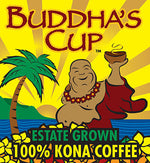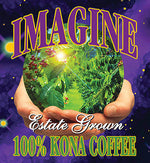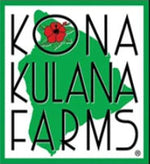Ever wondered how to make cold brew coffee at home that's just perfect?
Cold brew coffee has become popular over the years for its smooth, less acidic flavor and the appeal of a chilled coffee option.
Today, we’ll show you how to create the perfect cup of cold brew coffee at home.
To get the best coffee beans for your drink, make sure to check out our selection at Buddha's Cup.
What Ingredients and Equipment Make the Best Cold Brew Coffee?
Making a delicious cup of cold brew coffee is achievable with the right ingredients and equipment.
Take some to make sure you have quality coffee beans, the correct equipment, and that the water quality and temperature is correct for the type of coffee you have.
Selecting Quality Coffee Beans

It starts with choosing quality coffee beans.
The coffee bean types, their freshness, and the grind size will determine the final taste of your brew.
- The type of coffee bean you choose, whether it’s Arabica or Robusta, will affect the taste. Arabica beans are known for their sweeter flavor, while Robusta beans have a stronger, more bitter taste.
- Always opt for fresh beans. The fresher the coffee beans, the better the flavor. Look for beans that were roasted within the last two weeks.
- For cold brew, you want to go with a coarse grind. A grind that's too fine will result in a bitter brew, as it over-extracts during the long steeping process.
Looking to stock up on quality coffee beans for your next batch of cold brew? Check out Buddha’s Cup collection of premium coffee beans.
Essential Equipment for Cold Brew
When it comes to equipment, you don't need much to make cold-brew coffee, but choosing the right tools will make a difference.
- You’ll need a large container for brewing. A French press works well, but any large jar or pitcher will do.
- Filtration is key to a smooth cold brew. You can use cheesecloth, a fine-mesh sieve, or a coffee filter.
- If you want to get really precise with your cold brew, a kitchen scale and a thermometer can be handy.
Water Quality and Temperature
Water is a critical component of any coffee brew, including cold brew.
- Use filtered water if possible. The better the water quality, the better the brew.
- Cold brew is best brewed at room temperature or in the fridge.
- If your tap water doesn’t taste good on its own, it won’t make good coffee. Consider using bottled or filtered water.
Selecting the Right Cold Brew Coffee Ratios

Now that you’ve got your ingredients and equipment sorted, let’s talk ratios.
The coffee-to-water ratio determines the strength and flavor of your cold brew. A good starting point is 1 cup of coffee grounds to 4 cups of water.
Feel free to adjust according to your taste preference. More coffee will result in a stronger brew, while more water will make it lighter.
The Brewing Process: Step by Step
It’s time to get brewing. Here’s a step-by-step guide to ensure your cold brew coffee turns out perfect.
- Choose the right coffee beans
- Measuring the coffee grounds
- Prepping your water
- Combine coffee & water
- Covering & steeping
1. Choosing the Right Coffee Beans
Start with high-quality, fresh coffee beans. Your choice of bean will affect the flavor, so select beans that suit your taste preference.
2. Measuring the Coffee Grounds
Use the coffee-to-water ratio that works for your taste buds. You’ll need about 1 cup of coffee grounds for every 4 cups of water.
3. Prepping Your Water
Use cold or room-temperature water. The quality of your water will directly impact the taste of your brew.
4. Combining Coffee and Water
In your container, combine the coffee grounds and water. Make sure to stir gently but thoroughly to ensure an even blend.5. Covering and Letting It Steep
Seal your container to prevent any contaminants from getting in. Let your coffee steep for about 12 to 24 hours.
At our Coffee Club, you get to enjoy the best Kona coffee with free shipping, discounted pricing, and monthly coffee club member-only giveaways.
What is the Ideal Brewing Time and Temperature?
For cold brew coffee, a brewing time of 12 to 24 hours at room temperature or in the fridge is ideal. Using cold water for the brewing process is crucial.
Consider joining us for a tour around our Kona coffee farm!
How to Make a Smooth Cold Brew Coffee Through Straining and Filtering?

After your coffee has steeped, it’s time to strain and filter it to get that smooth, delicious cold brew.
You can use a cheesecloth, fine-mesh sieve, or a coffee filter to do this. Once strained, you can sweeten or cream your coffee as desired.
Straining and filtering is a great way to ensure that your cold brew has the highest quality possible.
The Art of Storing Cold Brew Coffee

To maintain freshness, store your cold brew in the fridge in an airtight container. It will stay fresh for up to two weeks.
Failing to keep the coffee fresh can not only decrease its aromatic quality, but will go stale quite quickly.
Serving and Enjoying Cold Brew Coffee
When serving, you can dilute the cold brew with water or milk to your taste. Add syrups or creamers for an extra kick of flavor.
Cold Brew vs. Iced Coffee: 3 Key Differences

Though both are delicious, cold brew and iced coffee have their differences.
The brewing method, flavor profile, and caffeine content can all be different between cold brew and iced coffee.
1. Brewing Method
- Cold Brew: Involves steeping coffee grounds in cold water for an extended period.
- Iced Coffee: Brewed hot and then cooled down with ice.
2. Flavor Profile
- Cold Brew: Smooth, less acidic, slightly sweet.
- Iced Coffee: Maintains traditional coffee flavors, with characteristic acidity and bitterness.
3. Caffeine Content
- Cold Brew: Often higher in caffeine due to the longer brewing time.
- Iced Coffee: Similar caffeine content to hot coffee.
At Buddha’s Cup, we’re more than coffee growers. Check out our teas, honey, merchandise, and more.
3 Tips for a Perfect Cold Brew
To wrap up our guide, here are three final tips to ensure your cold brew is just perfect.
- Select the right coffee beans
- Optimize brewing time and temperature
- Solve common cold brew challenges with strength
1. Selecting the Right Coffee Beans
Choose your beans carefully based on your flavor preferences. Ensure they’re fresh for the best taste.
2. Optimizing Brewing Time and Temperature
Experiment with brewing time and temperature to find what works best for you. Cold water and the right amount of time will create the perfect brew.
3. Solving Common Cold Brew Challenges
If your brew is too weak or too strong, adjust the coffee-to-water ratio and brewing time accordingly. With a bit of experimenting, you’ll find your perfect balance.
Bottom Line
Making cold brew coffee at home is an exciting adventure. With the right ingredients, equipment, and a bit of patience, you will create a smooth, delicious brew that’s just perfect for any time of day.
Enjoy your homemade cold brew, and explore the wonderful world of coffee with us at Buddha's Cup. We're passionate about delivering exceptional coffee experiences.
If you have any questions or want to learn more about our coffee, don't hesitate to contact us.
FAQs
Do I need special equipment to make cold-brew coffee?
While there are special cold brew coffee makers available on the market, they are not a necessity for making cold brew at home. The process can be done using simple household items such as a large jar or pitcher and a strainer. A French press can also be used for both the brewing and straining steps, making it a convenient option. However, for those looking to enhance their cold brew experience and perhaps achieve a more refined result, investing in a cold brew coffee maker might be worthwhile.
Can I use regular ground coffee for cold brew?
It is recommended to use coarsely ground coffee for optimal results. The cold brew process involves an extended period of steeping, and a coarser grind helps prevent over-extraction, which will lead to a bitter taste. If regular ground coffee is all that is available, it can still be used, but the resulting brew might be a bit stronger and more bitter than if a coarser grind were used.
How long does homemade cold brew last in the fridge?
Homemade cold brew coffee, when stored properly in an airtight container, will remain fresh and retain its quality for up to two weeks in the refrigerator. The key to its longevity is ensuring that it is stored properly, as exposure to air can lead to oxidation, which will diminish the flavor over time. Using a clean and airtight container helps preserve the freshness and prevents any fridge odors from affecting the taste of the cold brew. It’s also best to store the cold brew concentrate without any added milk or sweeteners, as these will shorten its shelf life.
Can I make cold-brew coffee with hot water?
The essence of cold brew coffee lies in its method of using cold or room temperature water for brewing, and this is what gives cold brew its unique characteristics. Brewing with hot water would result in a different extraction process, leading to a flavor profile similar to regular hot-brewed coffee, which is not the aim of cold brew. If hot water is used, the result would not be a cold brew but rather a regular coffee that has been cooled down, lacking the smooth, mellow characteristics that are distinctive of a true cold brew.













